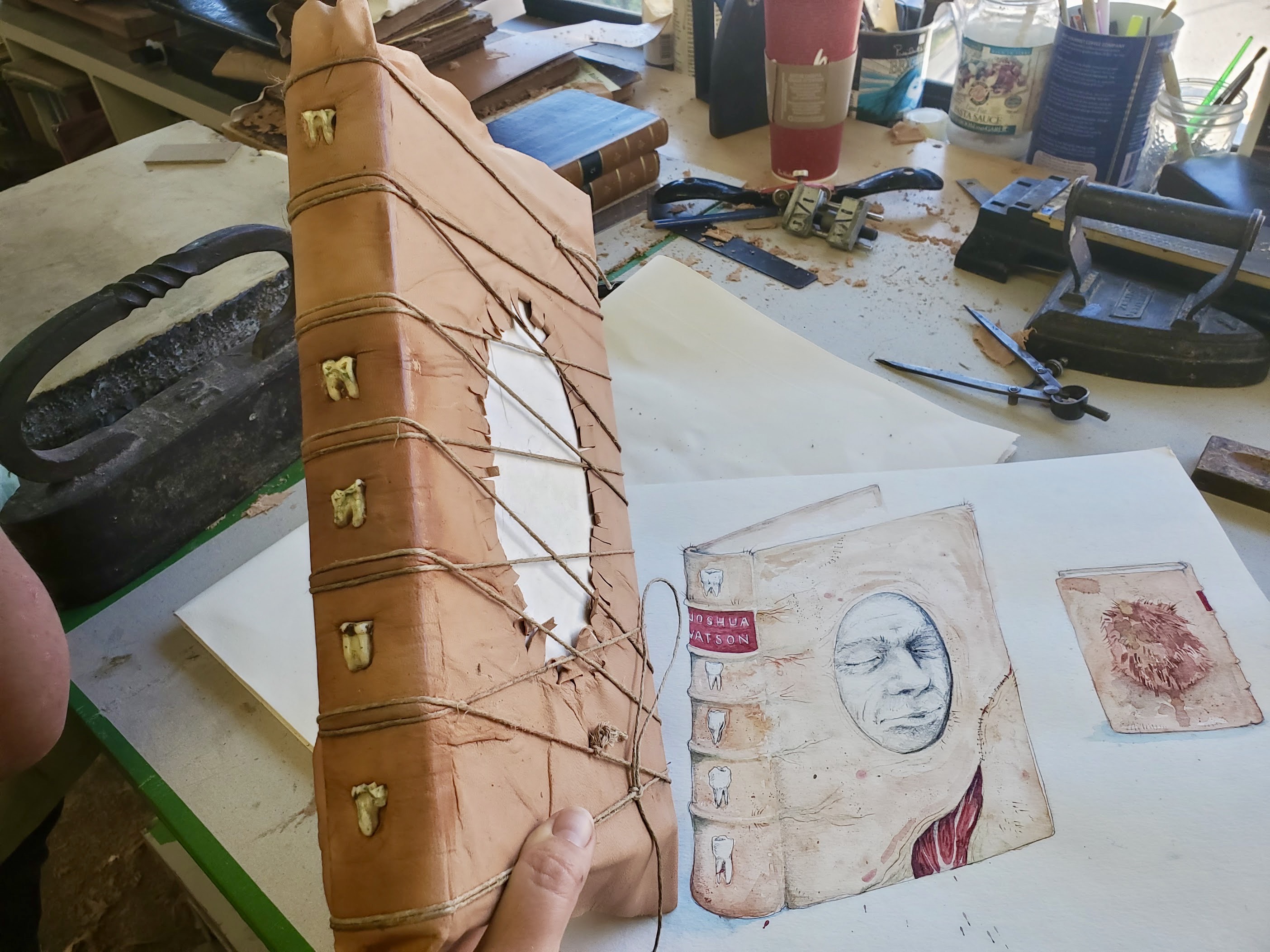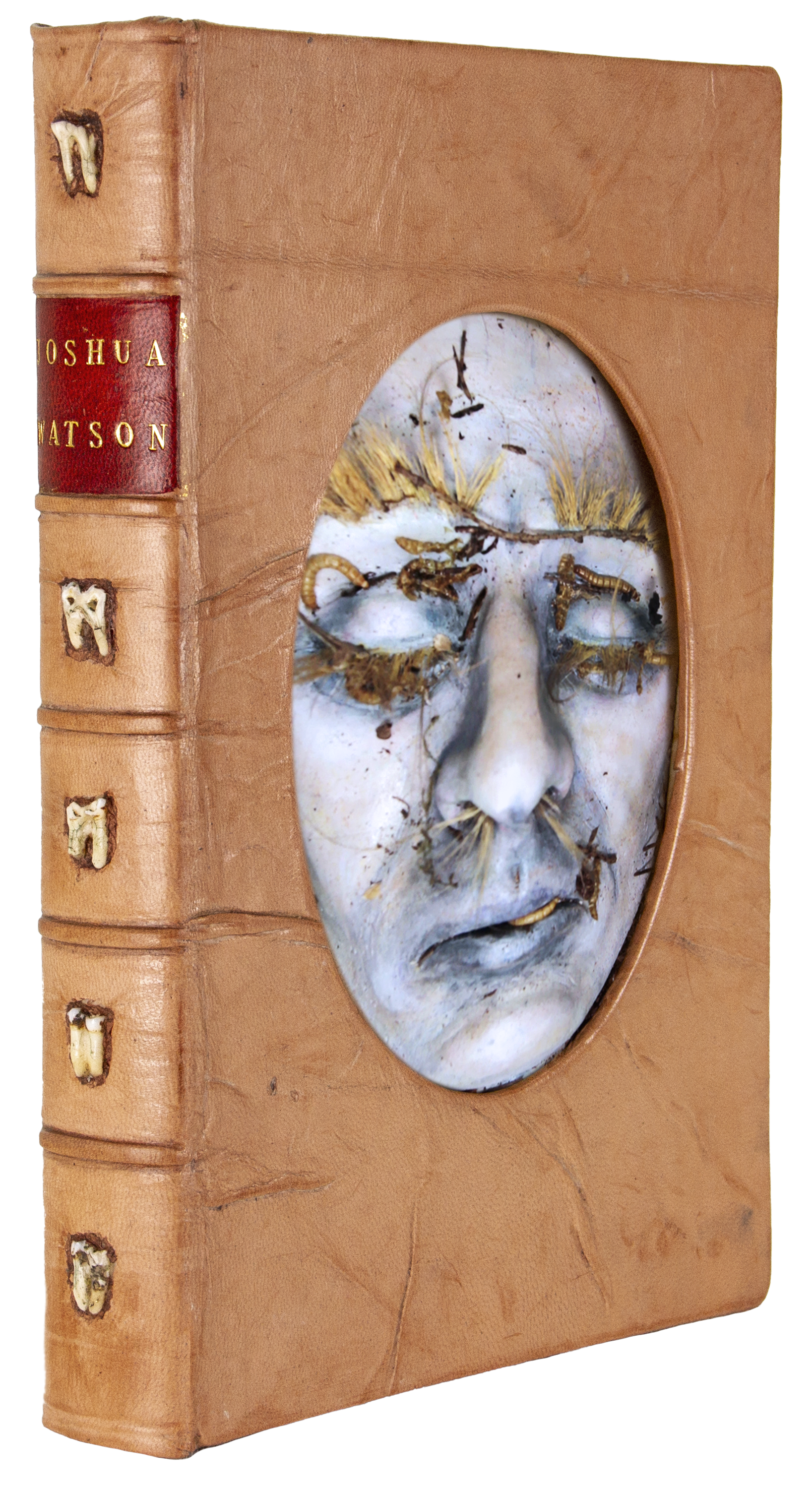Ideas, Process + Musical Structure
 Ten Years of Notebooks (2007-2017)
Ten Years of Notebooks (2007-2017)
Working with video as a medium has always clicked with me. I find the process painterly, sculptural and musical. I come from a family of musicians, studied the violin as a kid, and still play music today. My creative drive often gravitates toward visual art, and always has. Drawing, painting and ceramics are some of my first true loves. Although many of my finished works involve technology and digital components, I religiously keep notebooks with drawings, sketches and project ideas.
Video Art was introduced to me in my first year of art school. The time-based aspect of the medium, as well as my interdisciplinary approach to working with video, gave way to an enduring passion for moving images. Many of my early works use rhythm and repetition as structural elements, a theme that has reemgered in the last few years.
Joshua Watson’s Leg (In Four Movements) is a multichannel video installation that was developed from a handwritten note dated in the 18th century. I began to conceptualize the project as a traditional four-part symphony. Recent and current works have referenced the neuroscience of music. I am fascinated by the idea of creating moving images using post-production processes that embody the structural elements of classical music.

The book, This is Your Brain on Music: The Science of a Human Obsession, by Daniel J. Levitin, has been a primary source of inspiration in my recent work. My background is rooted in traditional classical music. My father was a professional orchestral musician. As a kid, I sat through hundreds of live concerts and hours of operas emanating from the stereo at home.
![]()
Although not appreciated at the time, I understand now how much this upbringing shaped my art practice, as well as my everyday thought processes and fundamentally, how my brain organizes and understands information.
It is said that learning music at an early age changes the structure of the brain, in particular, the corpus callosum, which is a fiber nerve bundle located beneath the cerebral cortex that connects the right and left hemispheres. This often allows for faster sensory reaction times in musicians versus non-musicians.
Simon Landry, a brain and cognition researcher, has found “that musicians have faster auditory, tactile, and audio-tactile reaction times. Musicians also have an altered statistical use of multisensory information. This means that they're better at integrating the inputs from various senses.” (https://www.inc.com/john-rampton/the-benefits-of-playing-music-help-your-brain-more.html)
Joshua Watson’s Leg (In Four Movements) is organized as a four-part symphony. Traditional symphonies from the 18th and 19th centuries often employed this form, beginning with a sonata, followed be a slow and lyrical movement, then a minuet or “scherzo” section, ending with a sonata rondo to bring the composition to a conclusion. Within each movement, there are inherent structural components. Using these conventional systems, the video is edited with an extreme amount of attention and awareness to rhythm, tempo and narrative form.
Highlighting musical form and structure in my video practice is motivated by a desire to create the presence of music without using literal music. Although the use of song can be deeply moving in film and video, and is often implemented to stir a variety of emotions, it is sometimes an enforced trope. I want my viewers to feel as though they are experiencing the sensation of music within their bodies without actually hearing music.
My intention is to evoke a sense of cadence & rhythm within my audience.

Working out symphonic form in my notebook
There is often a physical response that people have when listening to a musical composition.
When our brains take note of musical elements such as tone, timbre, rhythm and contour, we experience an array of corporeal feedback.
Sometimes we tap our toes or sway; sometimes nostalgia is triggered by song. We may feel an unconscious disturbance, or even a guttural recoil. The spectrum of neurological responses to music are what fascinate me the most.


My videos often begin with an affliction. I tend to work intuitively and begin by writing stories. Every concept that I work with starts with a tantalizing fascination of some kind, followed by a bubbling drive to materialize my ideas. I translate the images that I see in my head into a rough shot list. It is rare that I create a detailed storyboard, as I find that it can be limiting. Although my video shoots are planned in advance, especially when working with actors and crew, my number one goal is to gather as much footage as possible.
Typically, there are a minimum of two cameras shooting at all times so that I have multiple angles to work with. Cameras are always rolling, gathering inbetween moments and unplanned snippets that often make their way to the forefront of my editing process. It is not unusual for me to end up with over forty hours of video content to sort through, even when the intended output is meant to be 20 minutes or less. It is important to me to have a significant amount of footage to edit with because it is in the “editing bay” that I feel most creative. Here, I am a painter, a sculptor, a composer and an enigmatologist of sorts.
After importing my footage into the editing software, I document each clip and write a brief description in a notebook. This routine is absurd to be honest, but by having a tangible list of imagery, I can begin to visualize the output: what clips will line up well? How can I harmonize different visuals to create an interesting composition? Since this project in particular is organized into three different channels of video, as an editor I take into consideration how each screen will connect to the next.
![]()
![]()


Editing Notebook + Rondo ABACABA Form
An enigmatologist is an investigator of enigmas; a problem-solver, a decoder of puzzles. Every video project that I undertake is a puzzle in the beginning, and over time, I begin to solve equations that eventually end up as a final artwork. This is what my final timeline looks like:

Premiere Pro Timeline | The pink horizontal stripe towards the bottom (amidst the green audio clips) represents four different metronome tracks that I was employing to keep a beat while editing each segment of Joshua Watson’s Leg (In Four Movements).
Joshua Watson’s Leg (In Four Movements) is divided into chapters based off of a traditional four-part symphony. Within each movement, there is a narrative framework that follows various compositional forms, for example, ternary form, which is an ABA structure. The movements seen in the Premiere Pro timeline above are color-coded. The finale movement follows the rondo form of ‘ABACABA’. The rondo ‘A’ section (purple) is set in the bindery, with the character, Henry Newburn, binding a book out of Joshua Watson’s skin. The ‘B’ section (blue) follows Malin Sorsbie, who is practicing calligraphy. Finally, the ‘C’ section (teal) shows the corpse of Joshua Watson overtaken by insects and partially buried in the forest. The ‘A’ segment is the principal theme in the rondo movement, with the ‘B’ + ‘C’ epsiodes cycling through the storyline as short digressions.





Process images of sculpting Joshua Watson’s death mask

I’ve been fascinated with death masks for some time now. I remember seeing a selection of death masks in a museum when I was a kid. My morbid curiosity combined with my love for archives and history propelled me to create a death mask for the character, Joshua Watson, who is based on a real-life 18th century person from Newcastle Upon Tyne, UK.
This death mask is sculpted after the actor, Bruce Stens, who portrays Joshua Watson in the video. I have no idea what the real Joshua Watson actually looks like, but I have come across three people of the same name who were alive in 1773 in Newcastle or nearby (one a cheesemonger, one a surgeon and the other a grocer).
Working from Bruce’s likeness, I sculpted the mask out of clay and then added elaborate eyebrows and eyelashes from a mixutre of course paintbrush bristles and my own hair. The finished mask was used as a prop for the sculptural binding. I captured video of the death mask partially buried in dirt, swarming with mealworms and blue hornworms. The footage is looped on a small flatscreen tablet that is embedded in the cover of the handbound sculptural book, An Account of Joshua Watson.

Joshua Watson’s Leg (In Four Movements) is intended to be exhibited as a multi-channel video installation with an accompanying sculptural book and pseudo-historical objects. What visually appears to be an antique book, is actually a clamshell box that houses a small flatscreen monitor (tablet). The video component features Joshua Watson’s face beset with insects and organic debris. It is meant to appear as though his face is embedded within the book. The sculpture is an archive of the character’s story and “bound in his skin”.
The binding process began with a sketch of the concept, followed by discussions with master bookbinder, Richard Smart (who also portrays the character, Henry Newburn, in the video). Once the idea was finalized, I worked with Richard to gather materials for the project.

Original Concept Watercolor Design by Emilie Crewe
The book is bound in sheepskin, which has porous characteristics that are similar to human skin. The inlaid teeth in the spine are actually deer teeth that have been sanded and buffed and then set into the binding. The prodruding piece of skull on the back panel of the book is also from the same deer skull that I found in the woods a few years ago.
Richard has been binding and restoring antique books all of his life. He is a third-generation bookbinder from the UK. His work is sought out by book dealers, collectors and institutions all over the world.
From start to finish, An Account of Joshua Watson, took two full days to complete. It began with building a set of trays designed to fit the screen inside. The trays were covered with an antique paper that had unusual skin-like blemishes that suited the overall project. Boards were chopped and a cardboard spine was carved to give the appearance of an actual bound book.
The sheepskin hide was cut to size, and then Richard pared it so that it was thin enough to bind. Wheatpaste was used as an adhesive to bind the leather to the boards and spine. After drying overnight, the deer teeth and skull were joined to the spine & back board, and the trays were set into the binding using animal hide glue.
Finally, Richard applied a red leather label and used gold leaf to tool the lettering. All of these processes are seen in detail in the third and fourth movements of the video.
Thanks for checking out my process.
Feel free to get in touch anytime at emiliecrewe@gmail.com
Feel free to get in touch anytime at emiliecrewe@gmail.com



Cardboard tray for clamshell design; Deer skull and binder’s board; Richard Smart cutting into the skull with a dremel tool



Sanding down the skull cutout to be placed into the back board of the binding; Sanding a deer tooth


Inserting deer teeth into the carved spine with raised bands



The book is bound in sheepskin; cords are wrapped around the binding while it dries




